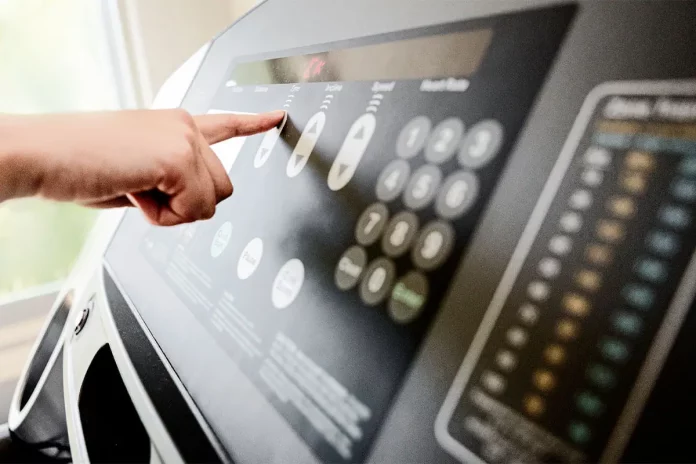Treadmill running is a popular and convenient way to get your daily dose of exercise. Whether you’re a seasoned runner or just starting out, the treadmill can provide an excellent platform to improve your cardiovascular health and overall fitness. However, like any form of exercise, effective treadmill training requires proper technique and planning.
In this blog, we will explore seven essential tips to help you maximize the benefits of your treadmill workouts. From adjusting the incline to finding the right pace and utilizing technology, these tips will help you elevate your treadmill training to the next level.
Whether you’re looking to improve your endurance, burn calories, or simply enjoy the benefits of a good workout, these tips will help you achieve your goals and maintain a consistent exercise routine. So, let’s get started and learn how to master the art of treadmill running for optimal results.
1. START EASY
If you’re new to treadmill running, it’s important to start at a moderate and controlled pace. Introducing your body to a new training stimulus requires patience and gradual progress to prevent injury or burnout. It’s crucial to give your body time to adapt to the treadmill’s unique environment and running surface before ramping up the intensity. In this blog, we’ll explore the best ways to approach treadmill running for beginners, including tips for setting the right pace and adjusting the incline. By following these guidelines, you’ll be able to establish a strong foundation for your treadmill training and build your endurance over time. So, let’s get started on your journey to becoming a confident and efficient treadmill runner.
2. ACCOUNT FOR AIR RESISTANCE
Treadmill running usually feels easier than running outdoors at the same pace. The main reason for this is the absence of air resistance. To compensate, set the treadmill gradient to 1%. This is an effective way to simulate the energy cost of outdoor running on a level surface.
3. WATCH YOUR POSTURE
The treadmill’s consistent, evenly cushioned surface along with the lack of external stimuli like air resistance and passing scenery can alter our perception of pace, causing changes to our running gait.
Treadmill running can also cause runners to look down at the display in a hunched posture. Look ahead as you run and pay attention to your posture and stride length to avoid injury and pain.
4. STAY HYDRATED
Treadmill running is usually hotter and more humid than running outdoors, where wind and air resistance provide natural cooling. In addition, indoor spaces are often poorly ventilated and shared with other exercisers.
Put simply, treadmill running makes you sweat! Compensate for the extra fluid loss with regular hydration. The treadmill is a good place to practice drinking while running.
5. GO LIGHT
The well-cushioned, rolling belt of the treadmill changes the way you strike and push off the running surface. Compared with outdoor running, you don’t have to push off as hard or for as long to generate forward propulsion.
This means you can dispense with heavier, thick-soled running shoes and let the treadmill take care of the cushioning. Consider a light, low-profile running shoe instead for improved sensitivity and a more dynamic running style.
6. MIX IT UP
Running on a treadmill allows you to train under the same conditions every day. There are no headwinds, no hills, and the surface is smooth and level. Though this can be an advantage, it can also be boring. Add variety to your treadmill workouts by including inclines and intervals.
7. RUN OUTDOORS
Though it might seem counterintuitive, going for a run outdoors is a great way to boost your treadmill training.
Outdoor running can enhance fat burning, help relieve the symptoms of seasonal affective disorder (SAD) and improve mood and mental health through exposure to cold, sunlight, and green spaces.
Outdoor running is also important for improving push-off and negotiating varied terrain – something that is lacking in treadmill running due to the consistent, rolling surface. For the ultimate training stimulus, combine treadmill running with outdoor workouts.
HIIT TREADMILL WORKOUTS
Alongside home exercise gyms such as treadmills, high-intensity interval training is another important fitness trend – and for good reason.
High-intensity interval training (HIIT) is a well-established way of improving cardiorespiratory fitness whilst saving time and burning extra calories. The benefits of HIIT include improvements in heart and lung health, body composition, and running performance.
Once you are feeling comfortable with treadmill running, you might want to combine the benefits of HIIT with the advantages of treadmill running and try a HIIT treadmill workout.
If you feel ready for HIIT treadmill workouts, make sure to balance interval and recovery duration. Intervals that are too long with insufficient recovery lead to fatigue and demotivation as well as increasing the risk of illness and injury. Fortunately, most running machines like the treadmill allow you to easily track intensity using heart rate or pacing.

3 WAYS TO SET YOUR TREADMILL HIIT INTENSITY
1. HEART RATE
Run your treadmill HIIT intervals at 80-90% of maximum heart rate (HRmax). You can calculate HRmax approximately by subtracting your age from 220.
2. PERCEIVED EXERTION
Rate your treadmill HIIT intensity using a 10-point scale where 1 equals ‘very, very easy’ and 10 equals ’maximal’. Run your treadmill HIIT intervals at 7 or 8 out of 10, that is, ‘hard’ to ‘very hard’. This scale is used by exercise professionals and equates well with 80-90% HR max.
3. 5KM RACE PACE
If you know your average pace for a 5km race, use this to set your interval intensity. Most runners average 80-90% HRmax at a 5km race pace.
Tip:
Running at high speed on a treadmill increases the risk of accidents and injury. Take time to acclimate to higher treadmill speeds, making sure that you can maintain a smooth technique, even while reaching for your water bottle or adjusting the running speed. Consult a health professional before beginning a HIIT workout program.
START A TREADMILL TRAINING PLAN
Ready to start treadmill training but not sure where to start? Choose a treadmill workout that suits you from our Treadmill Training Plan for All Fitness Levels.



